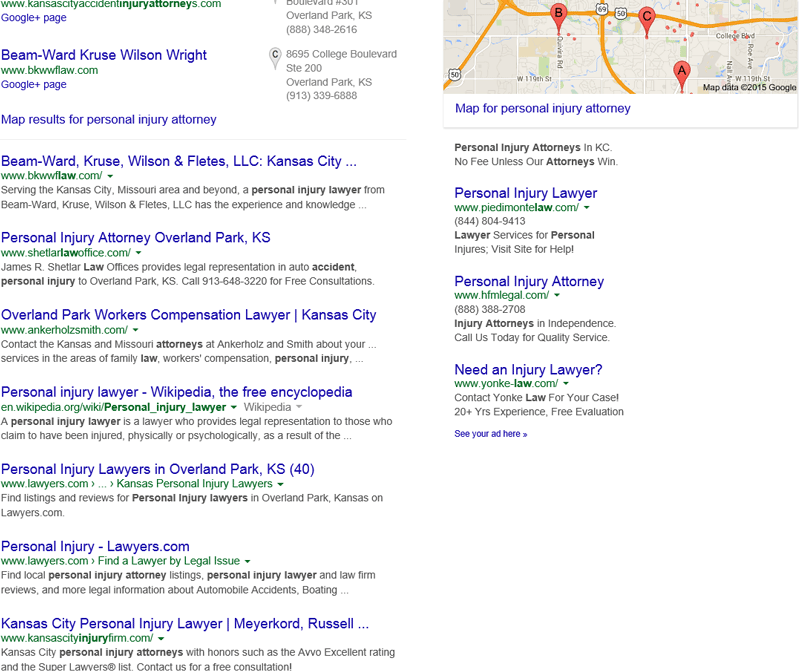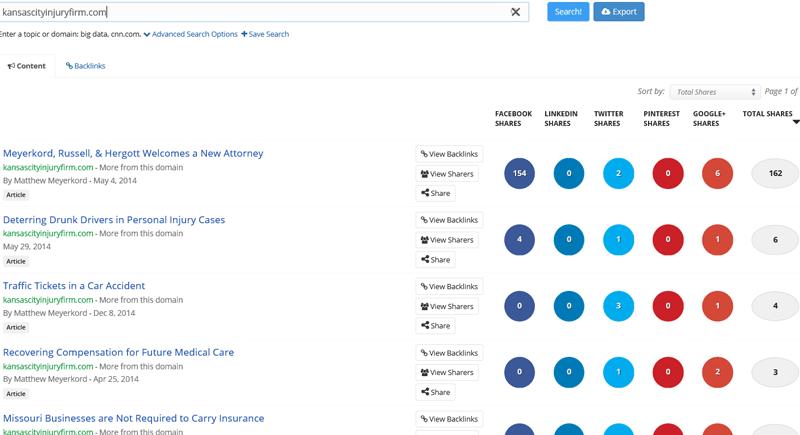SEO Advice for the SMB
There have been very few things that have made SEO easier for the SMB, so what is a small business owner to do?
There have been very few things that have made SEO easier for the SMB, so what is a small business owner to do?
Over the years, SEO has certainly not become “less complicated.” No. In fact, it’s much more complex and – more than ever before – it involves the culmination of “building a brand online,” as much as it does technical SEO, content marketing, social media marketing, usability/conversion rate optimization, PR/outreach/social promotion, and expert analytics/reporting.
There have been very few things that have made SEO easier for the SMB (small-to-medium sized businesses).
For too many SMBs, an SEO budget might be $300 to $500 per month, and what should an SMB do, given these circumstances?
Many SEOs would tell you to take the money and stick it in your pocket, but there are a few things that you can do – some that may require that you’re willing to get your hands a little dirty – that can help you with your organic search presence.
First, let’s cover some of the basics…
In order to do well in SEO, there are – as mentioned previously – “a bunch” of things that are the ingredients to “doing it right” in 2015. But, there are some key ingredients that may be “good enough,” that you should focus on, first.
So often, where SMBs go wrong is the very basics of simply not having enough of the right content on their websites. Technically speaking, it doesn’t take an “SEO” to write content. Where an SEO might help is in guiding you to what type of content that you need to create, the promotion of the content, and specifics of how you might optimize the content. With your limited budget, you can at least do the basics of this, and create the content.
You can spend hours in keyword research, certainly. But, as an SMB, you are running your own business and time is not something that you have “extra” of. So, the very easy/quick way to gain insight on what content you should create is to find a competitor who is doing it “right” and emulate them (we’ll call this “best practices”).
In order to find those who are “doing it right,” you might start simply by searching some keywords/phrases that you feel are on target, and see who is ranking for these. When you begin to see a pattern of one website showing up consistently, you can take that domain/website and run it through SEMrush.
Quick Tip: Just because a website ranks number one on “that one major keyword” does not mean that they are the website that you should try and emulate. Keep reading, so that you can better understand why I’m saying that.
For this example, I’m targeting the “personal injury attorney” space, in Overland Park, Kansas (a very small market, to be sure, but the example should be applicable to most).
Step 1: Search Google for “personal injury attorney” and check out the results:

So, what we have here are the usual directories (Findlaw is #1, above the local/map results), Wikipedia, and a few law firm websites. Let’s have a look at these, in order of their appearance, via SEMrush.
The first result is interesting. We can plainly see that they are – in fact – ranking number one for “personal injury attorney,” and Google is doing its job of serving up results that are locally based (even though I didn’t search for “Overland Park, KS” in my query). But, perhaps due to the fact that Venice is helping Google to serve up this local result, SEMrush is not showing us that the site is ranking for this phrase (SEMrush shows typical rankings that are typical of “anywhere” in the U.S.). So, first lesson: tools like SEMrush are awesome, but they are NOT perfect!
What you are left to analyze for the top result is that they (according to SEMrush) only rank for three keywords/phrases. This may not be the best website to emulate. Let’s keep looking.

Second Result:

Hmmm….once again, we have a phenomenon where the website is obviously ranking for “personal injury attorney,” but SEMrush is not able to report on that result.
As we keep looking at these, it’s not until I get to kansascityinjuryfirm.com that I see a website that seems to have any “good traction” (again, according to SEMrush):

Now that we have an example of a website that seems to be gaining a somewhat significant presence in Google’s results (SEMrush reports a top 20 presence across 20 keywords and shows a “SE Traffic Price” value of this traffic at $8,664 per month), we can now dig a little deeper into how they got there.
The first step that I take (again, keeping this process intentionally simple for SMB owners out there) is to search on Google, this query – site:kansascityinjuryfirm.com. Notice that I do not have a space between the colon and the URL. Also, you should try this both with www. and without www. (a website might have content on a sub-domain, such as blog.websitename.com). This will help you to see the content that is currently in Google’s index (again, not a perfect number, but “workable”).
In this case, this website is showing 325 pages indexed in Google:

One tip: I typically click through as many results as I can (toggle through the pagination at the bottom of the Google results page), until I get to “the end” (or close enough to the end) of Google’s results for this query.
In this case, I clicked through until I saw this:

So, even though I had initially seen 325 pages indexed, I believe the number of “good pages” to be closer to 164 (this screenshot).
At this point, you ask yourself…how many pages of content do I have? You might also ask yourself, what types of content have these guys created? And, most importantly, where are the gaps in the content that I have versus what I should have?
And, for ideas on what type of content you may want to create on your blog, you can use BuzzSumo to see the posts that a targeted competitor may have been successful with.
In the case of this competitor, the answer is “not a lot” (see graphic below). But, as with other tools, keep trying other competitors until/unless you find someone who may be “doing it right.”

Again, we are keeping this VERY basic, but I’m working under the assumption that you have a $300-per-month budget for SEO, and perhaps can’t afford the money for professional advice.
I firmly believe that Google is trying to move away from a link-based algorithm, and that they are incorporating a lot of other signals (brand/social/usability/technical/load-times/mobile, etc.). Again, right now I’m covering the basics of the basics.
Let’s look at the link profile of this “target” competitor.
There are lots of great tools for analyzing backlinks, including OpenSiteExplorer from MOZ, Ahrefs.com, and Majestic.
Here are the results from these (just looking at the basic number of links, as a metric):
OSE says that we have links from 22 different websites.
Ahrefs.com says we have links from 28 websites.
And Majestic says that we have links from 47 websites.
Now we have a sense of how many pages our website might need to be (and the type of content that we might need to build) and the number of links (from unique websites) that we may need to target.
BUT – HERE’S THE KEY: This is not a “quantity-only sum game.” In fact, if you had 1,000,000 pages of really crappy, and perhaps even duplicated, copy you are likely headed to a penalty. The same can be said for links (a ton of links from irrelevant websites or – God forbid – PAID links, and you too are likely headed for a penalty).
Do what you can naturally do to build a quality website, with unique/quality content. If you can manage it, include a blog (more often than not, you will want to host the blog on www.sitename.com/blog, with individual pages structured as www.sitename.com/blog/name-of-post). Promote your content (socially, and otherwise) and try and earn links/social mentions/shares.
For links, you can use these tools above to identify some targets for some links. There are, most likely, some quality directories that you can gain links from. And, if you have a blog, there are most likely some aggregators where you can submit your blog’s RSS to get some links (ie: http://law.alltop.com/ for this example).
The rule of thumb that should keep you out of any trouble with the search engines is to build your content and links, only in a manner in which you would be proud to discuss with Google, directly.
If you follow these simple instructions, and then take the limited budget that you have and put that toward a local listing management service (feeding your location information to the aggregators, including Acxiom, Factual, Infogroup, and Neustar), which won’t cost you that much, you should realizing positive impact from organic search traffic to your website, without paying money to someone who claims to be an SEO expert for $300 per month.
Homepage image via Shutterstock.